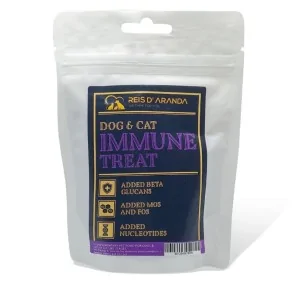Its name says it all: the Vienna blue rabbit comes from Austria. Not only is it beautiful with its shiny blue-grey...
EYE DISORDERS IN DOGS
INTRODUCTION
The eyes of dogs are very delicate organs. Exposed to the environment, they can be affected by a variety of diseases and pathologies. Milder diseases will only cause irritation of the eyeball, but more serious diseases can lead to blindness.
SYMPTOMS OF EYE DISEASES IN DOGS
Although the pathologies that can affect one or both of our dog's eyes are very diverse, the signs they produce are usually similar. If any of them are detected, we must go to the vet to determine exactly what the disease is. These are some of the usual symptoms
- Pain. It may even manifest itself with groaning.
- Tearing.
- Ocular secretion.
- redness
- cloud over the eye
- Strabismus, which is the loss of parallelism of the eyes.
- photophobia or sensitivity to light
- Protrusion of the nictitating membrane or third eyelid, covering the eye to a greater or lesser extent.
- Hard or soft consistency of the eyeball.
- Irritation, inflammation of the eyelids or loss of hair around them.
- Bulging or sunken eyes.
- Occasionally, an eye problem also reduces the dog's appetite and keeps him lethargic.
COMMON EYE DISEASES
ENTROPION
In this condition the edges of the eyelids fold over the eye. It mainly affects the lower eyelid. It is a congenital defect. This is why we see it most frequently in breeds such as the Shar pei, the Chow Chow, the Great Dane, the St. Bernard or the Bulldog. Continuous rubbing of the everted eyelid against the eyeball causes tearing and strabismus. The cornea may also become damaged. The treatment of choice is surgical.
PALPEBRAL TUMOURS
The most common eyelid tumour is an adenoma of the meibomian glands. It can be seen as cauliflower-like lumps. Sebaceous adenomas, more common in older dogs, or papillomas can also be identified. These are usually removed to prevent them from rubbing against the cornea and damaging it.
THIRD EYELID PROLAPSE (CHERRY EYE)
This problem is very easy to identify visually, as a lump similar to a cherry can be seen on the inner edge of the eye. This contacts the surface of the eye and can cause recurrent irritation and conjunctivitis, which never goes away. It is a congenital defect and is more common in breeds such as Cocker spaniels, Beagles, Bulldogs and small dogs. Surgery is used to solve the problem by putting the gland back in place.
CONJUNCTIVITIS
Conjunctivitis is an inflammation of the conjunctiva. It is perhaps the most common problem. We will observe ocular secretion that can be serous, mucous or purulent, as there are different types of conjunctivitis. It may be caused by irritation from, for example, cold air, an allergy or bacteria. Therefore, although many caregivers treat conjunctivitis with chamomile, it is essential to see a veterinarian to determine the exact cause. Treatment usually includes antibiotics, corticosteroids in some cases, as well as keeping the eye clean.
CORNEAL ULCER
This is a wound that will affect the cornea to a greater or lesser depth. It is usually caused by trauma, but can be associated with various diseases. It is a problem that is usually very painful. There is also tearing, strabismus, itching or photophobia.
Sometimes the ulcer is visible as a dull area. It is very important to see a vet because, in order to avoid serious damage, treatment must be early. Drugs may be prescribed for a prolonged period of time. If there is no improvement, surgery may be performed, with a choice of several techniques.
CHERATITIS
This can be identified as a cloud in the eye. It is due to inflammation of the cornea. Intense tearing, strabismus, photophobia and protrusion of the third eyelid appear. There are different types, but they all have in common that they can cause blindness. Interstitial keratitis or blue eye, which appears in cases of infectious hepatitis, stands out.
Also pannus, a pigmentary keratitis which mainly affects the German Shepherd. Some types of keratitis are progressive and incurable, so treatment can only control progression. Other types are treated with corticosteroids administered for life under strict veterinary supervision.
CATARACTS
Cataract is the loss of transparency of the crystalline lens. It is seen as a greyish film. There are congenital or juvenile cataracts that affect breeds such as the Cocker spaniel, the Boston terrier, the West Highland white terrier, the Golden, the Husky, the Bobtail, the Poodle or the Miniature Schnauzer.
Others are acquired and are due to old age or various diseases. There are surgical techniques to remove cataracts, but not all of them are operable. Juvenile cataracts sometimes reabsorb spontaneously.
UVEITIS
Uveitis is the inflammation of two areas of the eye called the iris and the ciliary body. Its appearance is associated with various systemic or local diseases, although in other cases, the cause is unknown.
It is a painful condition, causing tearing, strabismus, photophobia, protrusion of the third eyelid, decreased pupil size, clouding of the eye and a soft consistency. The vet will have to identify the cause that has triggered it, as the treatment depends on this.
GLAUCOMA
Glaucoma is a dangerous disease, as it can cause blindness. It occurs when more aqueous humour is generated than is eliminated. This increases intraocular pressure, which can cause damage to the optic nerve and retina.
It can be primary, affecting breeds such as the Beagle, Cocker spaniel, Samoyed or Basset hound. Secondary glaucoma is a complication of other diseases. Glaucoma causes pain, tearing, strabismus, hard eye, mist and enlarged pupil. It is an emergency, as blindness can occur within hours.
Treatment focuses on lowering intraocular pressure as soon as possible. If this does not work, surgery is used. Chronic glaucoma increases the size of the eyeball. Blindness occurs and removal is recommended, as it will be prone to injury and pain.
DRY EYE
Dry eye is a multifactorial and complex disease that affects the ocular surface and causes discomfort, visual problems and, in some cases, damage to the cornea and conjunctiva. It is a chronic disease that affects many dogs and cats and requires individualised diagnosis and treatment. There are several causes and types of dry eye that involve different degrees of severity and require individualised therapeutic strategies to achieve the best results.
PROGRESSIVE RETINAL ATROPHY (PRA)
This disease is characterised by degeneration of the visual cells of the retina, leading to irreversible blindness.
Its clinical manifestations are only recognisable through fundus examinations or through a study called electroretinography. The disease begins to be observed by the owner when the animal starts to show problems to see properly in low light environments. The average age at which these signs begin to appear is 4 to 5 years. This disease is hereditary and can be avoided by carrying out the appropriate health tests before breeding (the dog can be a carrier, affected or free).
CORNEAL PANNUS
Pannus, or chronic degenerative disease of the German Shepherd, is a pathology characteristic of this breed, although it also affects other breeds.
Its origin is genetic, but it is influenced by environmental factors such as dust or pollen. This disease requires specific lifelong treatment, and it is possible for symptoms to remit up to 90%. If it is not detected in time, the therapeutic response is lower and permanent blindness can occur.
PREVENTION
Prevention is essential, especially as our dogs get older and are more prone to develop them. Regular veterinary check-ups should also include an eye examination and, if any signs of problems are detected, action should be taken as soon as possible, otherwise these problems can lead to chronic pain and loss of sight.
Leave a comment
Log in to post comments
















